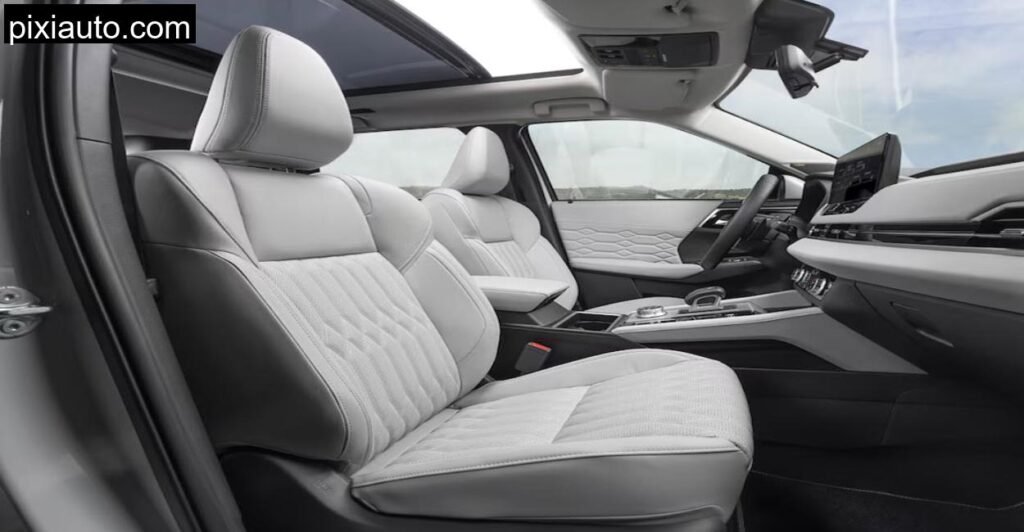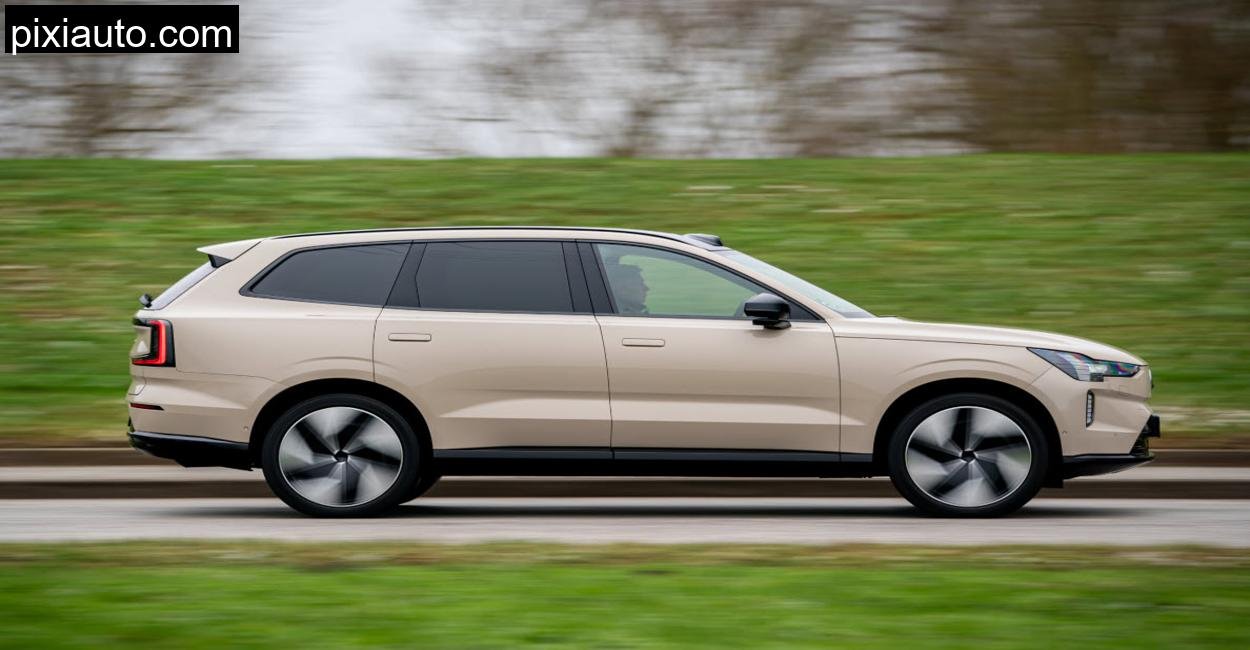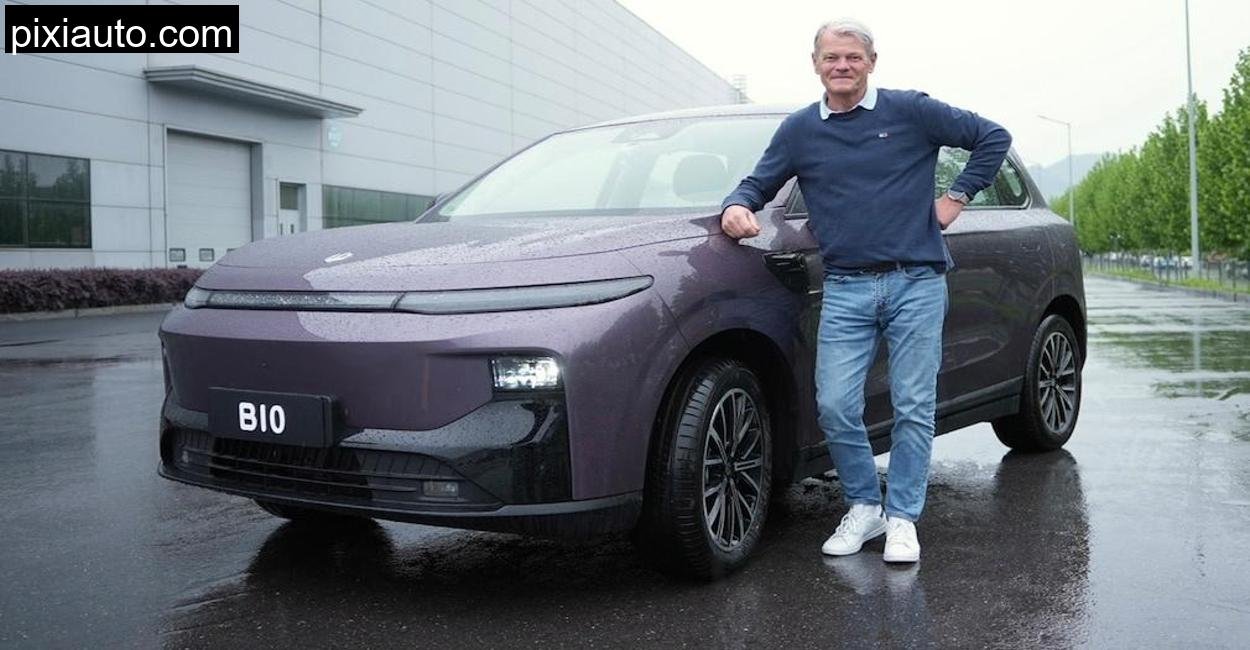Bramwald was the perfect test location, Germany’s ancient forest trails between Dransfeld and Hann. Münden make a subtle, winding stage. I’ve taken countless cars through here: some have stumbled on muddy forest roads, some have howled in discomfort across coarse gravel. But the Outlander? It floated.
Before we dive into my real, world impressions, let me frame what Mitsubishi has delivered here. This isn’t another badge, engineered Renault. Underneath is a shared platform with the Nissan X, Trail, but everything else, powertrain, cabin layout, tuning, and even design, is Mitsubishi’s own revival story. It’s less about noise, more about substance.
The Numbers That Matter: Technical Specification Table
For factual accuracy, every piece of technical data comes straight from Mitsubishi official web source.
| Specification | Detail |
| Powertrain | 2.4L NA petrol + 2 electric motors |
| Combined System Power | 306 hp |
| Front Electric Motor Output | 116 hp / 255 Nm |
| Rear Electric Motor Output | 136 hp / 195 Nm |
| Petrol Engine | 2.4L MPI, 136 hp / 211 Nm |
| Drivetrain | AWD (electric rear axle drive) |
| Transmission | Single, speed reduction gear |
| Electric, Only Range (WLTP) | 83, 86 km |
| Battery Capacity | 20 kWh (gross) |
| 0, 100 km/h | ~8 seconds |
| Top Speed (Electric) | 135 km/h |
| Ground Clearance | 20 cm |
| Wheels | 20, inch |
| Cargo Volume (Seats Up) | 471 liters |
| Charging (AC) | 3.7 kW standard, 7.2 kW optional |
| Max Towing Capacity | 1,600 kg |
| Fuel Tank | 56 liters |
| CO₂ Emissions (WLTP, combined) | 20, 26 g/km |
| Weight | 2,110 kg (kerb) |
| Max Payload | 620 kg |
Design That Stuck with the Concept

If you remember the Engelberg Tourer concept from 2019, you’ll recognize the shape right away. Mitsubishi has brought the design almost untouched into production: bold, confident, and angular without being overdone. There’s none of the soft, anonymous roundedness that plagues so many crossovers today.
The front end is upright and expressive, with LED signatures that carve out a strong visual presence. The side profile is clean, the rear sharp, edged. In Bramwald’s moody afternoon mist, the car didn’t just blend in, it belonged there, like some futuristic forest warden.
Inside, you’re greeted with real buttons. Not everything is on a touchscreen, and thank God for that. There’s a tactile climate panel, physical knobs for volume and drive modes, and chunky switches that feel satisfying to use with gloves on. The diamond, quilted leather seats (optional luxury pack) are Bentley, lite in appearance but comfortable in their own right. Driving this Outlander doesn’t feel like a video game, it feels mechanical, tangible.
Smooth on the Trail, Silent on the Asphalt
I started the day fully charged. Bramwald’s paths are far from forgiving, gravel, broken tarmac, clay, laced corners. The Outlander rolled through it all with calm confidence. Its ride is more controlled than plush. The 20, inch wheels do transmit some road feel, but it’s never crashy or unsettled.
In EV mode, which the car prioritizes by default, you get up to 135 km/h of pure electric speed. Around town, on trails, and even on brief autobahn stretches, I stayed electric for most of my morning. The two motors, one on each axle, coordinated with almost eerie silence. There’s no drama when they kick in. Just torque. Smooth, clean torque.
The rear motor is what really makes this car feel like something special. Not only does it ensure all, wheel, drive traction when needed, it provides true torque vectoring on slippery surfaces. One steep, rutted dirt climb would have sent most soft, roaders into a wheel, spinning panic. The Outlander simply climbed, quietly, purposefully.
The Engine: Quietly Old, School, Gloriously Simple

When the battery dipped below 30 percent and I started climbing up toward Bursfelde, the petrol engine kicked in. It’s a naturally aspirated 2.4, liter four, cylinder, and it sounds like something out of a pre, turbo era, basic, but beautifully so. No direct injection, no turbo lag, no complexity. Just clean, linear power.
It’s not a performance engine, but that’s fine. It blends with the motors to create a kind of layered propulsion, more elastic band than sledgehammer. Floor it, and you’ll hit 100 km/h in around 8 seconds, but it’s the refinement that stood out. Compared to the old Outlander PHEV, this one is near, whisper quiet when the engine hums into action. Gone is the mechanical whine. In its place is a polite murmur, distant but assuring.
Cabin Comfort and Utility: Touring with a Twist
The seating position is commanding but not towering. In the front, you feel integrated rather than perched. The second row is even better, mounted 30 cm above the floor with adjustable backrest angles. I drove around with two friends over 1.85 meters tall, and they had no complaints… until we opened the sunroof. The glass panel trims a few crucial centimeters of headroom, something to think about if your passengers are long, necked giants.
The boot is square, practical, and opens wide. I managed to fit a mountain bike in with the rear seats folded down (no need to remove the front wheel), and still had room for a crate of drinks, a duffel bag, and a muddy backpack. There’s a flat floor, no lip, and underfloor storage for cables. Mitsubishi clearly thought this part through.
The Tech Is… a Mixed Bag
If there’s one bone I have to pick, it’s the assist systems. Lane keep assist that nudges you even when you’re trying to avoid potholes. Driver distraction alerts that beep just because you look at the infotainment. And if you disable some systems via the steering wheel dial, they ring at you anyway.
The infotainment itself is serviceable. Navigation is quick, menus are clean, and wireless Apple CarPlay worked fine on my iPhone. But you’re not buying this car for a Tesla, style tech experience. This is about thoughtful, useful engineering, less screen, more drive.
Conclusion: Mitsubishi’s Comeback Is Real
After a day in the Bramwald with the Outlander, I kept thinking: this isn’t just Mitsubishi trying to keep up. It’s Mitsubishi rediscovering what made them great. They were pioneers in the PHEV game back in 2014, and now, they’ve returned with a product that’s confident, efficient, and surprisingly refined.
The 2025 Outlander PHEV doesn’t shout. It doesn’t flash gimmicks or overwhelm you with screens. Instead, it offers real electric range, authentic AWD capability, and a no, fuss drivetrain that’ll probably last longer than your lease.
This car is a quiet revolution. And in a world full of noisy, overengineered hybrids, that makes it something special.
How far can the Mitsubishi Outlander drive on electric power alone?
Up to 86 km WLTP, and in my real, world drive through Bramwald, I managed around 72 km before the petrol engine engaged.
Can Mitsubishi Outlander handle off, road terrain?
Absolutely. While not a hardcore off, roader, the 20 cm ground clearance, rear motor torque, and off, road modes make it more capable than most crossovers in this class.
How long does Mitsubishi Outlander take to charge?
With a standard 3.7 kW charger, it takes around 5.5 hours. With the optional 7.2 kW onboard charger, charging time drops to under 3 hours.




Leave a Comment